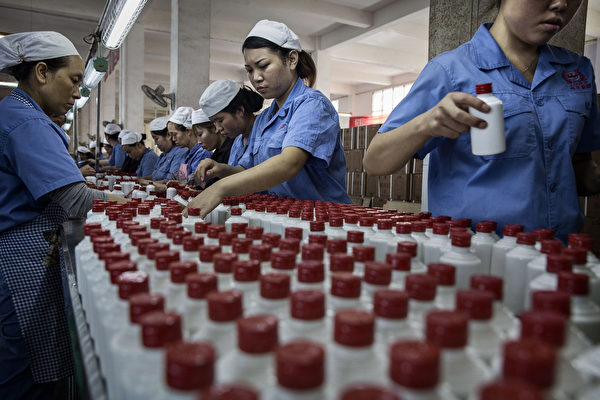On June 11, the wholesale price of a 53-degree Flying Moutai (bulk) bottle was 1990 yuan per bottle, according to industry insiders. This marks the lowest price for Flying Moutai this year.
A third-party testing platform and a liquor pricing WeChat public account reported on June 11 that the wholesale price of a 53-degree Flying Moutai (bulk) bottle in 2025 was 1990 yuan per bottle, while the wholesale price for a 53-degree Flying Moutai (original box) bottle was 2080 yuan.
A tobacco and liquor retail store owner in Beijing told Jiemian News that she currently buys back single bottles of 53-degree Flying Moutai for 1940 yuan and sells them for 2080 yuan. Previously, the retail price of a single bottle of Flying Moutai sold by her store was above 2150 yuan. She mentioned, “In the past few days, prices have dropped significantly, much cheaper than at the beginning of the year.” She noted that the Moutai prices in the terminal market have hit a new low for the year.
This is not the first time Flying Moutai has fallen below the 2000 yuan per bottle mark this year.
Earlier reporting by China Finance Online mentioned that ahead of the May Day holiday, some stores on Pinduoduo were offering single bottles of 53-degree 500ml Flying Moutai for 1999 yuan, or two bottles for a total of 3990 yuan. After the holiday, although Flying Moutai prices had risen slightly, the price for purchasing two 53-degree 500ml Flying Moutai bottles had dropped to 3965 yuan, less than 1983 yuan per bottle, lower than during the May Day holiday.
The report indicated that for a long time, 2000 yuan was seen as a psychological barrier for Flying Moutai prices. The breach of this barrier not only signals the decline of the Moutai brand but also reflects a dramatic change in China’s high-end liquor market and the entire consumer sector.
To curb the continuous decline in liquor market prices this year, well-known liquor companies such as Wuliangye, Yanghe, and Luzhou Laojiao have issued notices to stop supplying and to support pricing.
Moutai’s direct selling system has started to halt the supply of 500ml Flying Moutai. According to Beijing Business Daily, some enterprise customers who have paid but not received their orders have been informed by Moutai’s provincial sales company to request refunds.
Guizhou Moutai told Jiemian News that the company is closely monitoring market price fluctuations and will make comprehensive adjustments. However, they mentioned, “It is currently the off-season for liquor consumption, combined with various factors such as policy impacts, the decrease in Flying Moutai prices is still within a normal range.”
As market prices decline, Moutai’s stock price has also been falling. On June 11, Moutai’s stock was reported at 1480 yuan per share, dropping below the 1500 yuan mark per share, with a total market value of 1.86 trillion yuan.
Not only Moutai, but also the prices of the three giants of Chinese liquor – Moutai 1935, Wuliangye, and Luzhou Laojiao’s National Cellar 1573, have recently fallen below the thousand yuan mark. According to a report by Wall Street News on May 26, a tobacco and liquor wholesale and retail store owner in Beijing’s Chaoyang district, Chang Le, stated, “I can give you the 8th generation Wuliangye at a minimum retail price of 940 yuan, the National Cellar 1573 at 900 yuan per bottle, and Moutai 1935 can be taken at 700 yuan per bottle.”
The report mentioned that prices in other regions are even lower than those in the Beijing market, and prices at specialty stores for various liquor brands are also below a thousand yuan.
Analysts quoted by Financial News stated that the severe internal competition in the liquor market is caused by surplus production capacity, shrinking consumption, and high inventory levels.
Regarding the future of the liquor market, Open Source Securities believes that the industry truly hitting rock bottom will require waiting for inventory cycles to clear out. This adjustment not only involves restructuring the price system but also tests whether liquor companies can break out of the dead cycle of “pressure-selling-stop-supply.”

